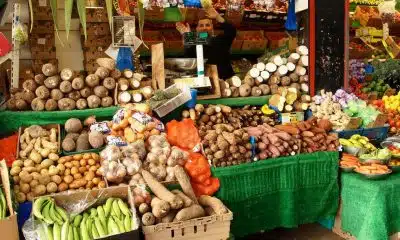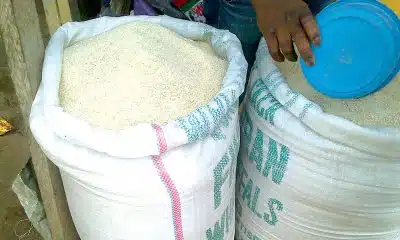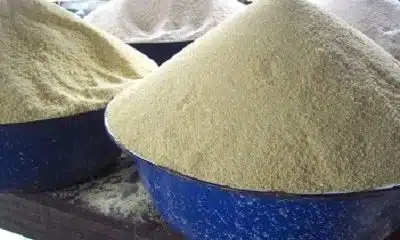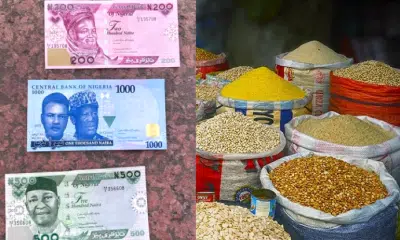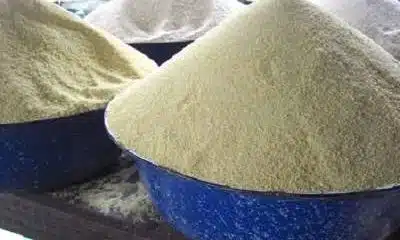Business
Price Of 50kg Bag Of Garri In Nigeria
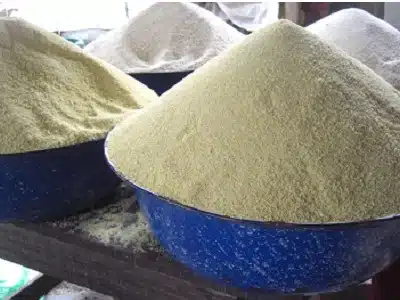
In Nigeria, garri, a staple food product derived from cassava, is a key component of many households’ diets.
However, the price of garri, especially in 50kg bags, is influenced by various factors, including geographic location, transportation costs, and the type of garri.
The cost of transporting garri from production sites to markets significantly affects its retail price.
Regions closer to major garri-producing areas often enjoy lower prices due to reduced transportation costs. Conversely, areas far from these production hubs face higher prices.
Garri is available in two main types: yellow and white. The yellow variety is processed with red oil, giving it its distinctive colour, while the white variety remains unaltered.
Despite the simple difference in preparation, this distinction leads to a slight price variation: a 50kg bag of yellow garri averages N45,000, whereas white garri is slightly cheaper, averaging N43,000 for the same quantity.
Garri is sold in various units of measurement, from cups and paint buckets to larger 50kg and 100kg bags.
A standard 50kg bag contains approximately 43 paint buckets or 960 cups, equivalent to 120 mudus. This standardization helps in gauging the quantity and price in different market segments.
Factors Influencing Garri Prices
1. Cassava Production Levels: The supply of cassava, the primary raw material for garri, significantly affects its price. In years with abundant cassava harvests, garri prices tend to decrease, while poor yields due to factors like weather conditions or pest infestations lead to price hikes.
2. Transportation Costs: The logistics of moving garri from rural production hubs to urban markets contribute to its final price. High fuel prices and poor road infrastructure can increase transportation costs, thereby elevating the market price of garri.
3. Market Demand: As a dietary mainstay, garri has a consistent demand. However, demand spikes can push prices up, often influenced by socio-economic factors or seasonal consumption trends.
4. Inflation And Economic Policies: The broader economic environment, including inflation rates and government policies affecting agricultural subsidies or import tariffs, can impact the cost of garri production and distribution.
5. Technological Advances: Improvements in cassava processing technology and farming practices can lead to increased efficiency and lower production costs, potentially reducing garri prices.
Top Garri-Producing States In Nigeria
Several Nigerian states are renowned for their high cassava yield and garri production, notably:
1. Ondo State: Often leading in cassava production, Ondo contributes significantly to Nigeria’s garri market, with its vast farmlands dedicated to cassava cultivation.
2. Imo State: Known for its agricultural prowess, Imo State boasts extensive cassava production, making it a key player in the garri supply chain.
3. Cross River State: With favourable climatic conditions and fertile soil, Cross River is a major cassava-growing state, subsequently influencing the garri market.
4. Edo State: Edo’s contribution to Nigeria’s cassava and garri production is substantial, thanks to its robust agricultural sector.
5. Delta State: This state is another significant contributor to the national garri production, supported by its large-scale cassava farming activities.

